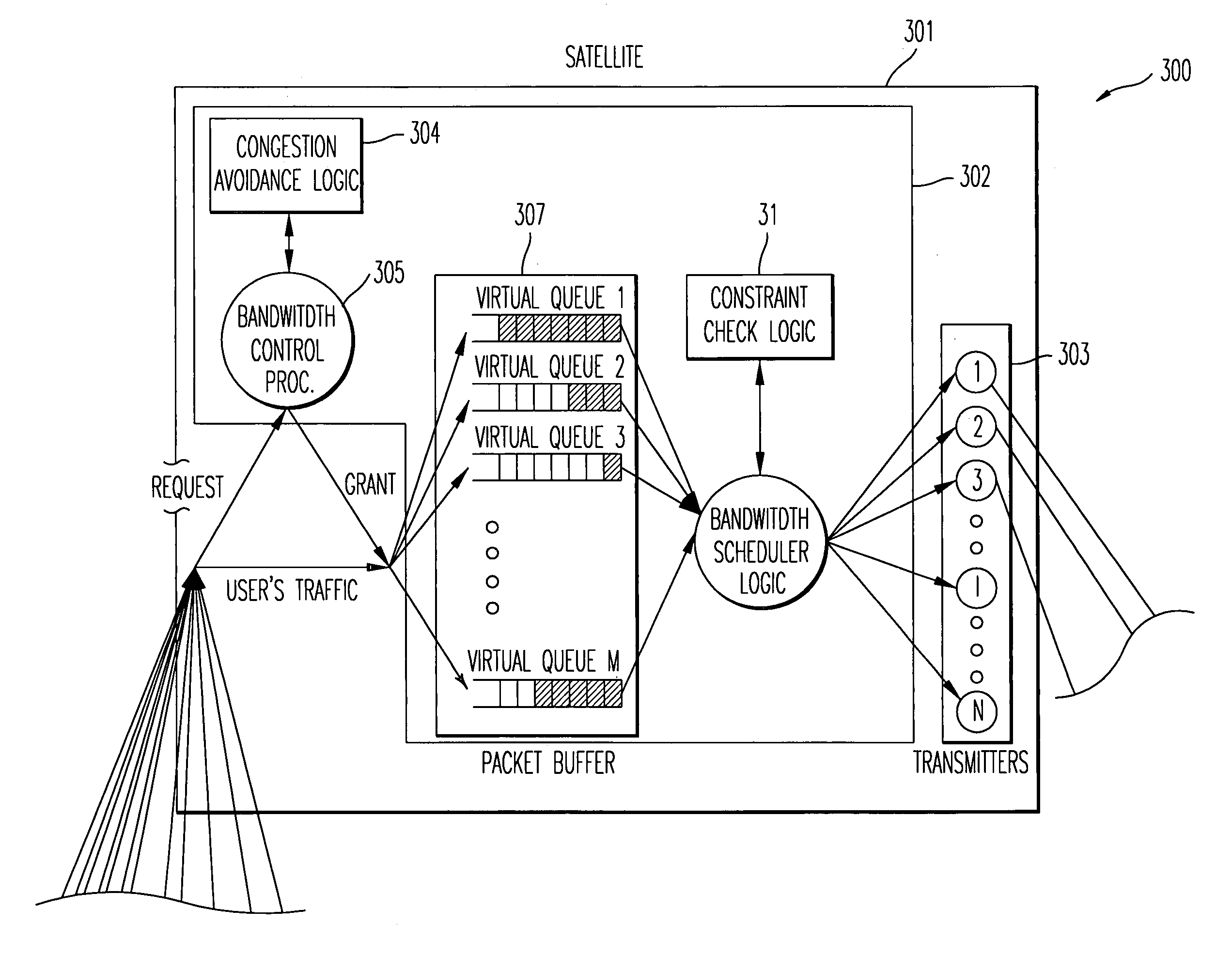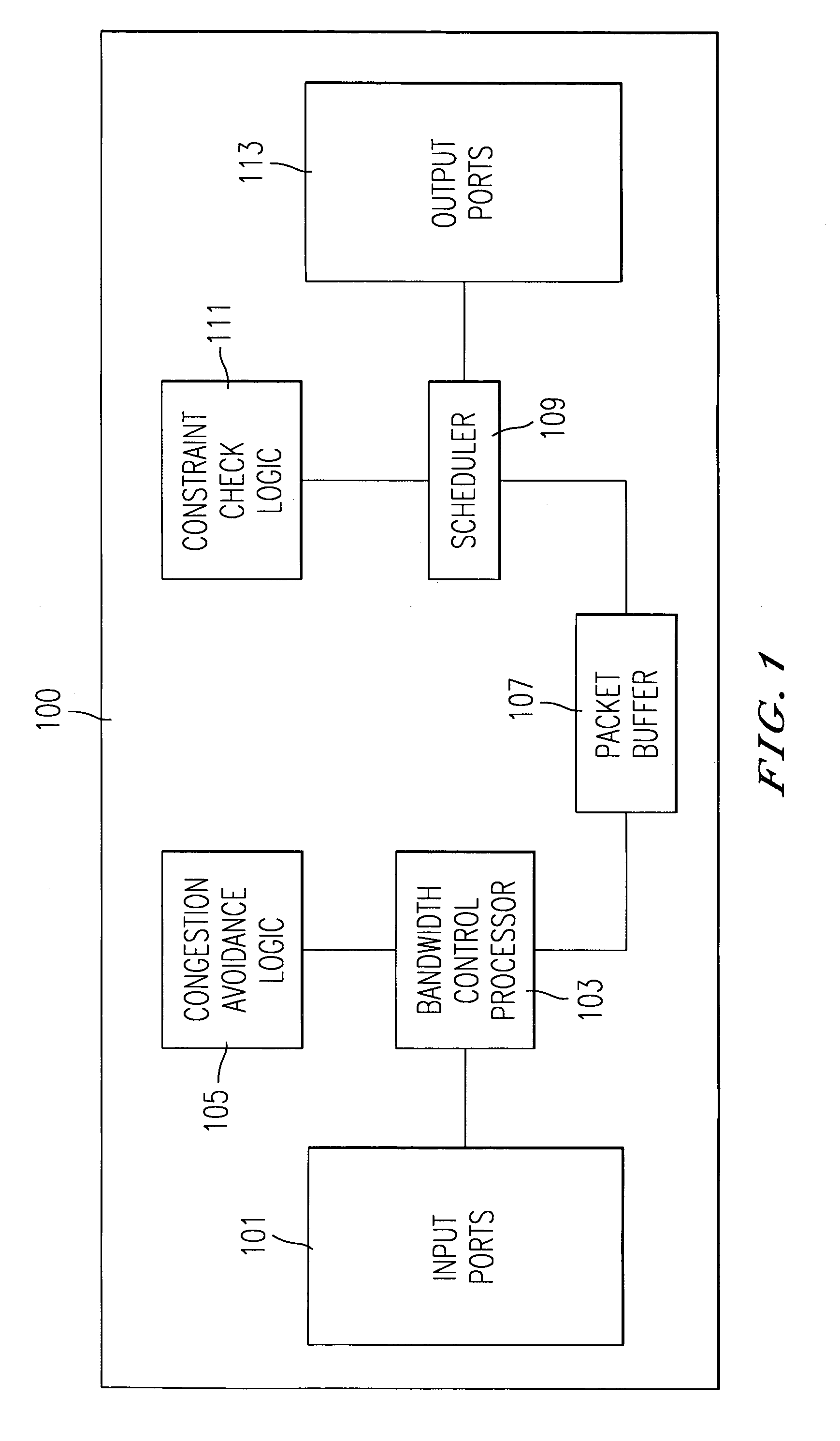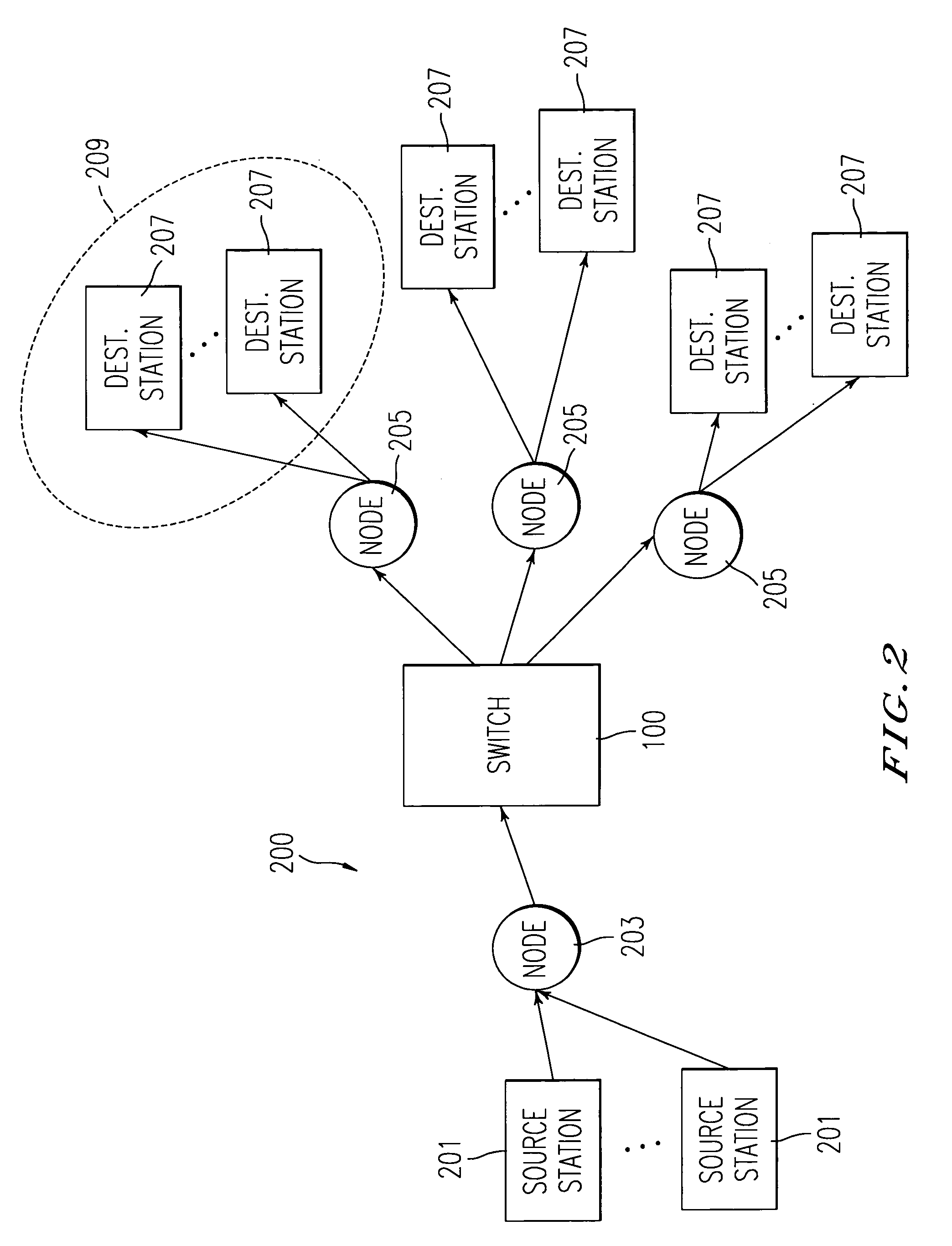Available bandwidth control mechanism
a bandwidth control and bandwidth technology, applied in the field of communication systems, can solve the problems of reducing application response times, affecting and putting enormous strain on network resources (e.g., switch capacity), so as to improve the efficiency of switching communication systems
- Summary
- Abstract
- Description
- Claims
- Application Information
AI Technical Summary
Benefits of technology
Problems solved by technology
Method used
Image
Examples
Embodiment Construction
[0029]In the following description, for the purposes of explanation, specific details are set forth in order to provide a thorough understanding of the invention. However, it will be apparent that the invention may be practiced without these specific details. In some instances, well-known structures and devices are depicted in block diagram form in order to avoid unnecessarily obscuring the invention.
[0030]The present invention accomplishes congestion avoidance by using a scheduler that collects bandwidth metrics and transmits these metrics to a traffic control processing logic. Specifically, a scheduler within a switching system generates bandwidth metrics for a destination region. The traffic control processing logic receives the bandwidth metrics. The traffic control processing logic includes a utilization module that determines utilization associated with the destination site based upon the received bandwidth metrics, and an error calculation module that computes the difference ...
PUM
 Login to View More
Login to View More Abstract
Description
Claims
Application Information
 Login to View More
Login to View More - R&D
- Intellectual Property
- Life Sciences
- Materials
- Tech Scout
- Unparalleled Data Quality
- Higher Quality Content
- 60% Fewer Hallucinations
Browse by: Latest US Patents, China's latest patents, Technical Efficacy Thesaurus, Application Domain, Technology Topic, Popular Technical Reports.
© 2025 PatSnap. All rights reserved.Legal|Privacy policy|Modern Slavery Act Transparency Statement|Sitemap|About US| Contact US: help@patsnap.com



